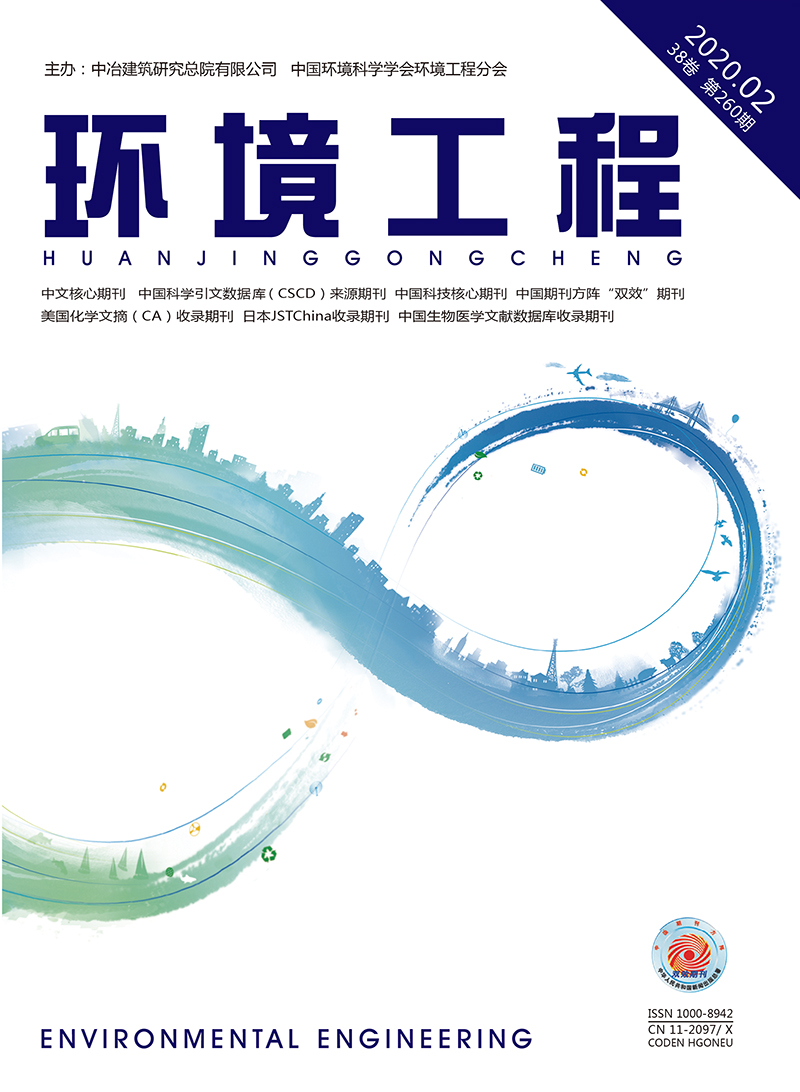|
LI W, LIU Z F, HE C Y, et al. Water shortages raised a legitimate concern over the sustainable development of the drylands of northern China:evidence from the water stress index[J]. Science of The Total Environment, 2017,590:739-750.
|
|
王浩, 王建华. 中国水资源与可持续发展[J]. 中国科学院院刊,2012,27(3):352-358.
|
|
仇付国. 污水再生利用发展趋势及其风险评价[J]. 大众科技,2005(4):85-86.
|
|
胡洪营. 再生水水质安全评价与保障原理[M]. 北京:科学出版社,2011:515.
|
|
李国新, 颜昌宙, 李庆召. 污水回用技术进展及发展趋势[J]. 环境科学与技术,2009,32(1):79-83.
|
|
曲炜. 我国污水处理回用发展历程及特点[J]. 中国水利,2013(23):50-52.
|
|
BARTELS C, WILF M, ANDES K, et al. Design considerations for wastewater treatment by reverse osmosis[J]. Water Science and Technology, 2005a, 51(6/7):473-482.
|
|
BELLONA C, DREWES J E. Viability of a low-pressure nanofilter in treating recycled water for water reuse applications:a pilot-scale study[J]. Water Research, 2007, 41(17):3948-3958.
|
|
DEL PINO M P, DURHAM B. Wastewater reuse through dual-membrane processes:opportunities for sustainable water resources[J]. Desalination, 1999, 124(1):271-277.
|
|
SINGH R. Analysis of energy usage at membrane water treatment plants[J]. Desalination and Water Treatment, 2011, 29(1/2/3):63-72.
|
|
WESTERHOFF P, MOON H, MINAKATA D, et al. Oxidation of organics in retentates from reverse osmosis wastewater reuse facilities[J]. Water Research, 2009,43(16):3992-3998.
|
|
孙迎雪, 胡洪营, 汤芳, 等. 城市污水再生处理反渗透系统RO浓水的水质特征[J]. 环境科学与技术,2015,38(1):72-79.
|
|
KHEDR M G. Membrane fouling problems in reverse osmosis desalination applications[J]. Journal of Water Reuse & Desalination, 2000, 10(3):8-17.
|
|
TAM L S, TANG T W, LAU G N, et al. A pilot study for wastewater reclamation and reuse with MBR/RO and MF/RO systems[J]. Desalination, 2007, 202(1/2/3):106-113.
|
|
FLEMMING H C. Reverse osmosis membrane biofouling[J]. Experimental Thermal and Fluid Science, 1997,14(4):382-391.
|
|
GREENLEE L F, LAWLER D F, FREEMAN B D, et al. Reverse osmosis desalination:water sources, technology, and today's challenges[J]. Water Research, 2009, 43(9):2317-2348.
|
|
FLEMMING H C, SCHAULE G, GRIEBE T, et al. Biofouling:the Achilles heel of membrane processes[J]. Desalination, 1997, 113(2):215-225.
|
|
MATIN A, KHAN Z, ZAIDI S, et al. Biofouling in reverse osmosis membranes for seawater desalination:phenomena and prevention[J]. Desalination, 2011,281:1-16.
|
|
TANG F, HU H Y, SUN L J, et al. Fouling characteristics of reverse osmosis membranes at different positions of a full-scale plant for municipal wastewater reclamation[J]. Water Research, 2016,90:329-336.
|
|
BRANDA S S, VIK Å, FRIEDMAN L, et al. Biofilms:the matrix revisited[J]. Trends in Microbiology, 2005,13(1):20-26.
|
|
MAYER C, MORITZ R, KIRSCHNER C, et al. The role of intermolecular interactions:studies on model systems for bacterial biofilms[J]. International Journal of Biological Macromolecules, 1999,26(1):3-16.
|
|
SHENG G P, YU H Q, LI X Y. Extracellular polymeric substances (EPS) of microbial aggregates in biological wastewater treatment systems:a review[J]. Biotechnology Advances, 2010,28(6):882-894.
|
|
TSUNEDA S, AIKAWA H, HAYASHI H, et al. Extracellular polymeric substances responsible for bacterial adhesion onto solid surface[J]. FEMS Microbiology Letters, 2003,223(2):287-292.
|
|
HERZBERG M, KANG S, ELIMELECH M. Role of extracellular polymeric substances (EPS) in biofouling of reverse osmosis membranes[J]. Environmental Science & Technology, 2009,43(12):4393-4398.
|
|
于童. 污水再生处理反渗透膜面细菌生物污堵潜势研究[D]. 北京:清华大学,2018.
|
|
JIANG S X, LI Y N, LADEWIG B P. A review of reverse osmosis membrane fouling and control strategies[J]. Science of the Total Environment, 2017,595:567-583.
|
|
PANDEY S R, JEGATHEESAN V, BASKARAN K, et al. Fouling in reverse osmosis (RO) membrane in water recovery from secondary effluent:a review[J]. Reviews in Environmental Science and Bio/Technology, 2012,11(2):125-145.
|
|
VROUWENVELDER J, VAN DER KOOIJ D. Diagnosis, prediction and prevention of biofouling of NF and RO membranes[J]. Desalination, 2001,139(1):65-71.
|
|
KHAN M T, HONG P Y, NADA N, et al. Does chlorination of seawater reverse osmosis membranes control biofouling?[J] Water Research, 2015,78:84-97.
|
|
WANG Y H, WU Y H, TONG X, et al. Chlorine disinfection significantly aggravated the biofouling of reverse osmosis membrane used for municipal wastewater reclamation[J]. Water Research, 2019,154:246-257.
|
|
LAZAROVA V, SAVOYE P, JANEX M L, et al. Advanced wastewater disinfection technologies:state of the art and perspectives[J]. Water Science and Technology, 1999,40(4/5):203-213.
|
|
HIJNEN W A M, BEERENDONK E F, MEDEMA G J. Inactivation credit of UV radiation for viruses, bacteria and protozoan (oo)cysts in water:a review[J]. Water Research, 2006, 40(1):3-22.
|
|
BOLTON J R, LINDEN K G. Standardization of methods for fluence (UV dose) determination in bench-scale UV experiments[J]. Journal of Environmental Engineering, 2003,129(3):209-215.
|
|
郭美婷. 污水紫外线消毒中病原指示菌的复活特性及控制方法研究[D]. 北京:清华大学,2008.
|
|
WANG Y H., WU, Y.H., TONG, X., et al. Chlorine disinfection significantly aggravated the biofouling of reverse osmosis membrane used for municipal wastewater reclamation[J]. Water Research, 2019, 154:246-257.
|
|
WANG Z P, ZHANG T. Characterization of soluble microbial products (SMP) under stressful conditions[J]. Water Research, 2010,44(18):5499-5509.
|
|
LYKO S, WINTGENS T, AL-HALBOUNI D, et al. Long-term monitoring of a full-scale municipal membrane bioreactor:characterisation of foulants and operational performance[J]. Journal of Membrane Science, 2008,317(1):78-87.
|
|
ZHANG W J, CAO B D, WANG D S, et al. Variations in distribution and composition of extracellular polymeric substances (EPS) of biological sludge under potassium ferrate conditioning:effects of pH and ferrate dosage[J]. Biochemical Engineering Journal, 2016,106:37-47.
|


 Login
Login Register
Register E-alert
E-alert






 DownLoad:
DownLoad: